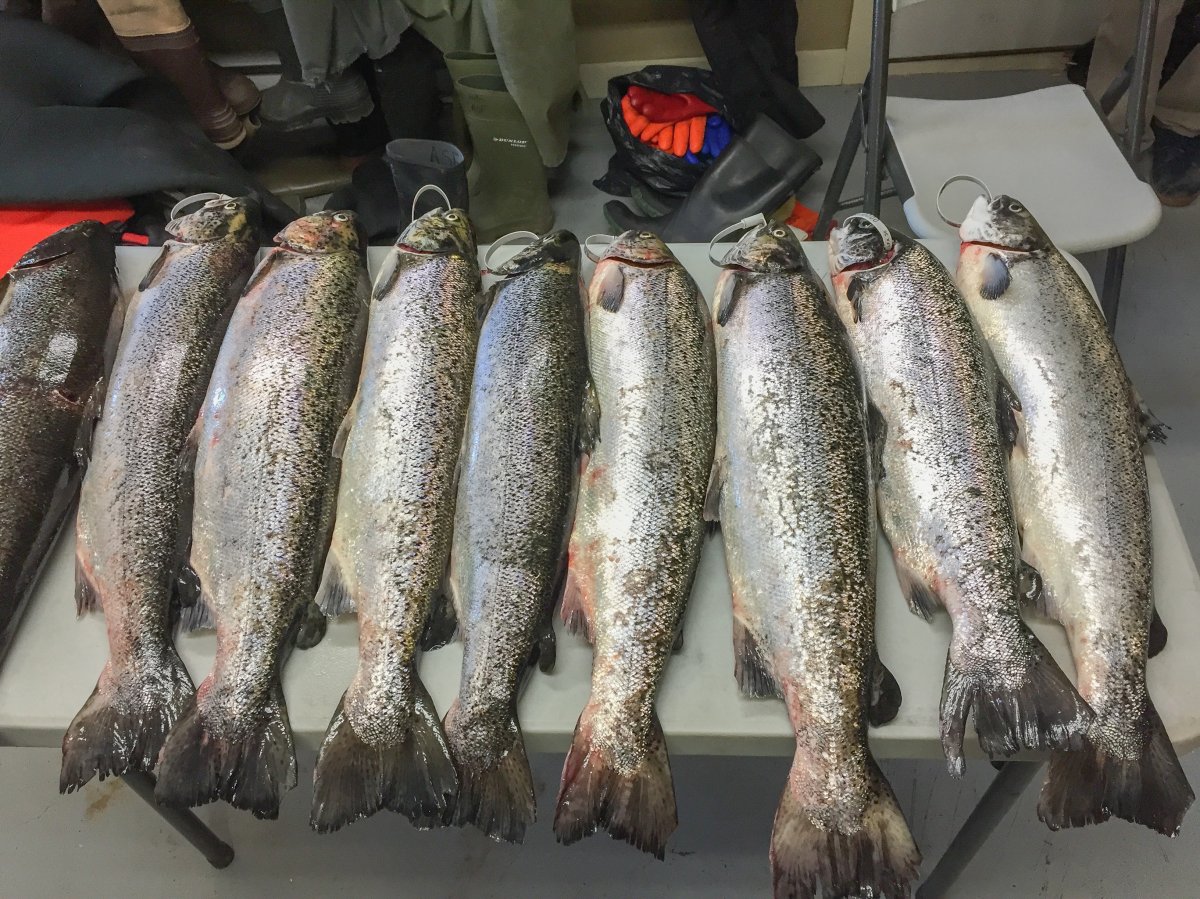New Brunswick’s Department of Fisheries and Oceans has launched a pilot project with hopes of determining if the aquaculture industry poses a problem for wild Atlantic salmon.

The project comes just as concern about wild salmon populations throughout the region is starting to increase.
READ MORE: Number of wild Atlantic salmon drops for second straight year
Twenty-four receiver sites were established on both on Passamaquoddy Bay and the river system where scientists hope much of the information they need will come from. The aquaculture industry is working with the Department of Fisheries and Oceans with some of the strategically-placed sensors at both active and inactive salmon cage sites.
Sixty young salmon were recently tagged in the river system and released. Those tags trip a sensor in the receivers when the fish swim within range. That information will determine if in fact wild salmon are interacting with salmon cage sites, and how often.
DFO researcher Marc Trudel says the information is important.

Get daily National news
“There are concerns about the potential transfer of disease from wild salmon to aquaculture, but also the potential for transfer of disease from aquaculture to wild salmon,” Trudel says.
“There’s also the potential attraction around salmon cages that could be feeding on wild-salmon smolts or other fish that are in the area.”
WATCH: 1,000 Atlantic salmon are back in their natural habitat

Trudel says the research will serve an additional purpose.
“The salmon are expected to leave Passamaquoddy Bay, go around the south end of Nova Scotia and eventually pass Halifax. Our series of receivers near Halifax will let us know if the fish made the full journey up to there and we’ll be able to detect how many of them actually successfully migrated that way.”
READ MORE: Conservation group says no wild Atlantic salmon detected at site in N.B. river
With this being a pilot project, Trudel says it’s not known how long it will take to gather the needed information, or how that data may shape future policies.
The budget for the project will be at least $500,000.
- Donald Trump claims B.C.’s ‘very large faucet’ could help California’s water woes
- U.S. TikTok ban case pits free speech vs. national security. Which will win?
- Meta bans RT, other Russian state media outlets over ‘foreign interference’
- A final, tragic text from doomed Titan sub revealed at Coast Guard hearing







Comments